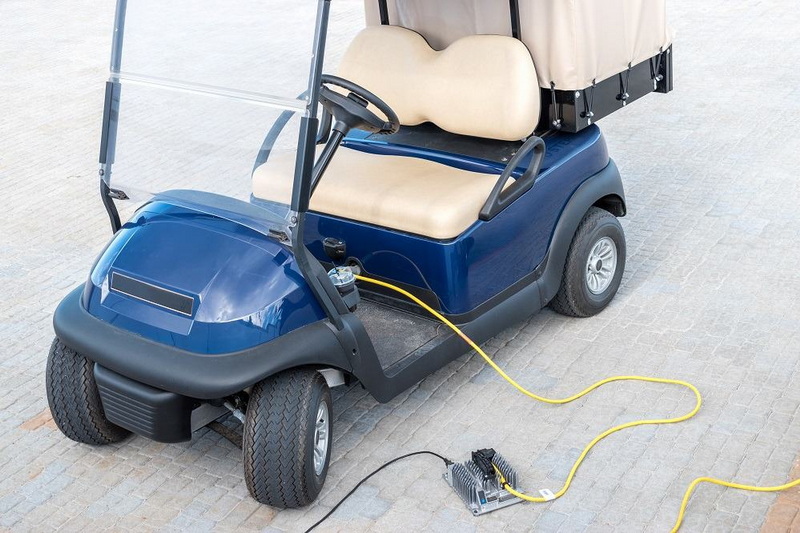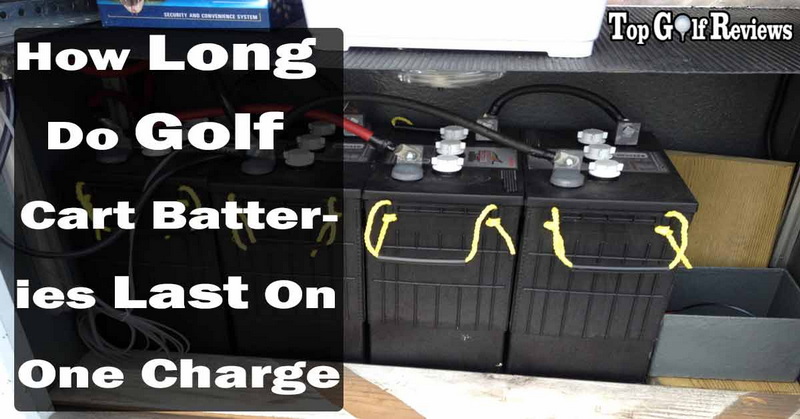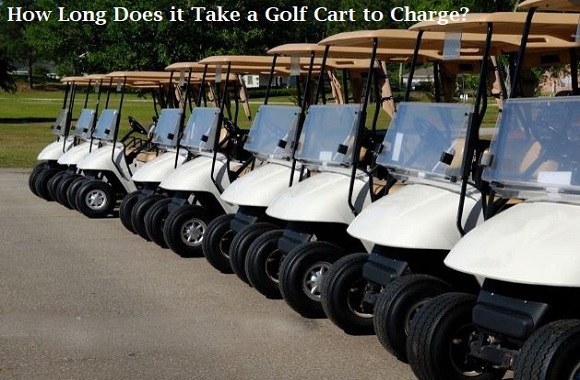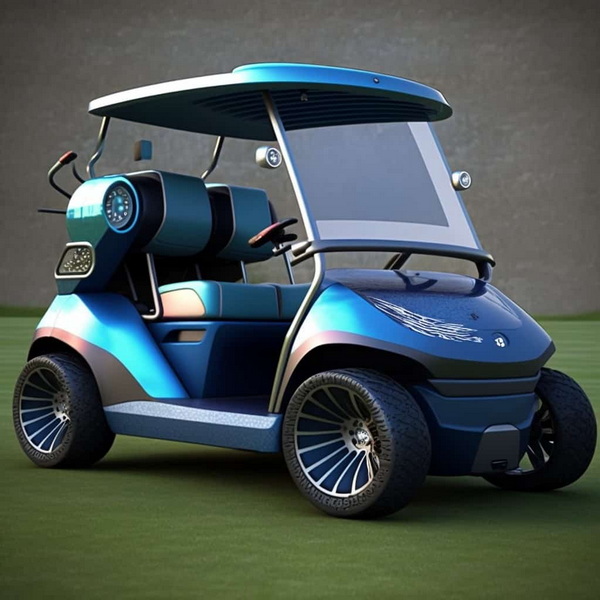Content Menu
● Understanding Electric Golf Cart Batteries
>> Lead-Acid Batteries
>> Lithium-Ion Batteries
● Factors Affecting Charging Time
>> Battery Type
>> Charger Type
>> Battery Condition
>> State of Charge
>> Ambient Temperature
● Average Charging Times
>> Lead-Acid Battery Charging Times
>> Lithium-Ion Battery Charging Times
● Best Practices for Charging Your Golf Cart
>> Charge Regularly
>> Use the Right Charger
>> Monitor Charging Time
>> Maintain Battery Health
>> Avoid Overcharging
● Common Misconceptions About Charging Electric Golf Carts
>> Myth 1: You Can Charge Your Golf Cart Anytime
>> Myth 2: All Chargers Are the Same
>> Myth 3: You Should Let the Battery Drain Completely Before Charging
>> Myth 4: Fast Charging Is Always Better
>> Myth 5: You Don't Need to Maintain Lithium-Ion Batteries
● Conclusion
● Frequently Asked Questions
>> 1. How often should I charge my electric golf cart?
>> 2. Can I use a fast charger on a lead-acid battery?
>> 3. What is the lifespan of an electric golf cart battery?
>> 4. How can I tell if my golf cart battery needs to be replaced?
>> 5. Is it safe to charge my golf cart overnight?
Electric golf carts have become increasingly popular for their convenience, eco-friendliness, and ease of use. Whether you're using them on the golf course, in gated communities, or for personal transportation, understanding how long it takes to charge an electric golf cart is essential for maximizing its efficiency and ensuring a smooth ride. In this article, we will explore the factors that influence charging time, the average charging durations for different types of golf carts, and best practices for maintaining your golf cart's battery.

Understanding Electric Golf Cart Batteries
Before diving into charging times, it's important to understand the types of batteries used in electric golf carts. Most electric golf carts are powered by lead-acid batteries or lithium-ion batteries.
Lead-Acid Batteries
Lead-acid batteries are the traditional choice for electric golf carts. They are relatively inexpensive and widely available. However, they require more maintenance and have a shorter lifespan compared to lithium-ion batteries. Lead-acid batteries typically take longer to charge, usually between 6 to 8 hours, depending on the charger and the state of the battery.
Lithium-Ion Batteries
Lithium-ion batteries are becoming more popular due to their efficiency and longer lifespan. They charge faster than lead-acid batteries, often taking only 4 to 6 hours to reach a full charge. Additionally, lithium-ion batteries are lighter and require less maintenance, making them a preferred choice for many modern electric golf carts.
Factors Affecting Charging Time
Several factors can influence how long it takes to charge an electric golf cart. Understanding these factors can help you manage your charging routine more effectively.
Battery Type
As mentioned earlier, the type of battery significantly affects charging time. Lead-acid batteries generally take longer to charge than lithium-ion batteries.
Charger Type
The charger used can also impact charging time. Standard chargers typically take longer to charge batteries, while fast chargers can significantly reduce charging time. However, using a fast charger on a lead-acid battery can lead to overheating and damage, so it's essential to use the appropriate charger for your battery type.
Battery Condition
The condition of the battery plays a crucial role in charging time. A well-maintained battery will charge more efficiently than a battery that is old or has been poorly maintained. Regular maintenance, including checking water levels in lead-acid batteries and ensuring clean terminals, can help improve charging efficiency.
State of Charge
The current state of charge also affects how long it takes to charge a golf cart. If the battery is completely drained, it will take longer to charge than if it has some charge remaining. For example, a battery that is at 50% charge will take less time to reach full capacity than a battery that is completely dead.
Ambient Temperature
Temperature can impact battery performance and charging time. Batteries tend to charge more slowly in cold temperatures and may charge faster in warmer conditions. However, extreme heat can also damage batteries, so it's essential to find a balance.

Average Charging Times
Now that we understand the factors affecting charging time, let's look at the average charging durations for electric golf carts.
Lead-Acid Battery Charging Times
- Standard Charger: 6 to 8 hours
- Fast Charger: 4 to 6 hours
Lithium-Ion Battery Charging Times
- Standard Charger: 4 to 6 hours
- Fast Charger: 2 to 4 hours
These times can vary based on the factors discussed earlier, but they provide a general guideline for what to expect when charging your electric golf cart.
Best Practices for Charging Your Golf Cart
To ensure your electric golf cart charges efficiently and maintains its battery life, consider the following best practices:
Charge Regularly
It's essential to charge your golf cart regularly, especially after each use. Avoid letting the battery drain completely, as this can shorten its lifespan. Aim to charge the battery when it reaches around 20% capacity. This practice not only helps in maintaining battery health but also ensures that you have enough charge for your next outing.
Use the Right Charger
Always use the charger recommended by the manufacturer for your specific battery type. Using the wrong charger can lead to overheating and damage to the battery. If you are unsure about which charger to use, consult the user manual or contact the manufacturer for guidance.
Monitor Charging Time
Keep track of how long it takes to charge your golf cart. If you notice a significant increase in charging time, it may be a sign that your battery is aging and may need replacement. Regular monitoring can help you catch potential issues early, allowing for timely maintenance or replacement.
Maintain Battery Health
Regular maintenance is crucial for prolonging the life of your golf cart battery. For lead-acid batteries, check the water levels and clean the terminals regularly. For lithium-ion batteries, ensure they are kept in a cool, dry place and avoid exposing them to extreme temperatures. Additionally, consider using a battery maintainer to keep the battery in optimal condition during periods of inactivity.
Avoid Overcharging
Overcharging can damage your battery and reduce its lifespan. Most modern chargers have built-in mechanisms to prevent overcharging, but it's still a good practice to unplug the charger once the battery is fully charged. This not only helps in maintaining battery health but also saves energy.

Common Misconceptions About Charging Electric Golf Carts
There are several misconceptions surrounding the charging of electric golf carts that can lead to improper usage and maintenance. Here are a few of the most common myths:
Myth 1: You Can Charge Your Golf Cart Anytime
While it is generally safe to charge your golf cart at any time, it is best to charge it after each use. Charging a partially drained battery is more efficient and helps maintain battery health.
Myth 2: All Chargers Are the Same
Not all chargers are created equal. Using a charger that is not compatible with your battery type can lead to damage. Always use the charger specified by the manufacturer.
Myth 3: You Should Let the Battery Drain Completely Before Charging
This is particularly true for lead-acid batteries, which can suffer from sulfation if allowed to discharge completely. Instead, aim to recharge your battery when it reaches around 20% capacity.
Myth 4: Fast Charging Is Always Better
While fast charging can save time, it may not be suitable for all battery types. Lead-acid batteries, in particular, can be damaged by fast charging. Always check the manufacturer's recommendations before using a fast charger.
Myth 5: You Don't Need to Maintain Lithium-Ion Batteries
While lithium-ion batteries require less maintenance than lead-acid batteries, they still need care. Regularly check for any signs of wear and ensure they are stored in a suitable environment.
Conclusion
Understanding how long it takes to charge an electric golf cart is essential for maximizing its efficiency and ensuring a smooth ride. By considering factors such as battery type, charger type, battery condition, state of charge, and ambient temperature, you can better manage your charging routine. Following best practices for charging and maintaining your golf cart battery will help prolong its life and ensure you get the most out of your electric golf cart.

Frequently Asked Questions
1. How often should I charge my electric golf cart?
- It's best to charge your electric golf cart after each use, especially when the battery reaches around 20% capacity.
2. Can I use a fast charger on a lead-acid battery?
- While fast chargers can be used, they may lead to overheating and damage. It's recommended to use a standard charger for lead-acid batteries.
3. What is the lifespan of an electric golf cart battery?
- Lead-acid batteries typically last 4 to 6 years, while lithium-ion batteries can last 7 to 10 years with proper maintenance.
4. How can I tell if my golf cart battery needs to be replaced?
- If you notice a significant increase in charging time or a decrease in performance, it may be time to replace your battery.
5. Is it safe to charge my golf cart overnight?
- Yes, it is generally safe to charge your golf cart overnight, especially if you have a charger with an automatic shut-off feature.











































